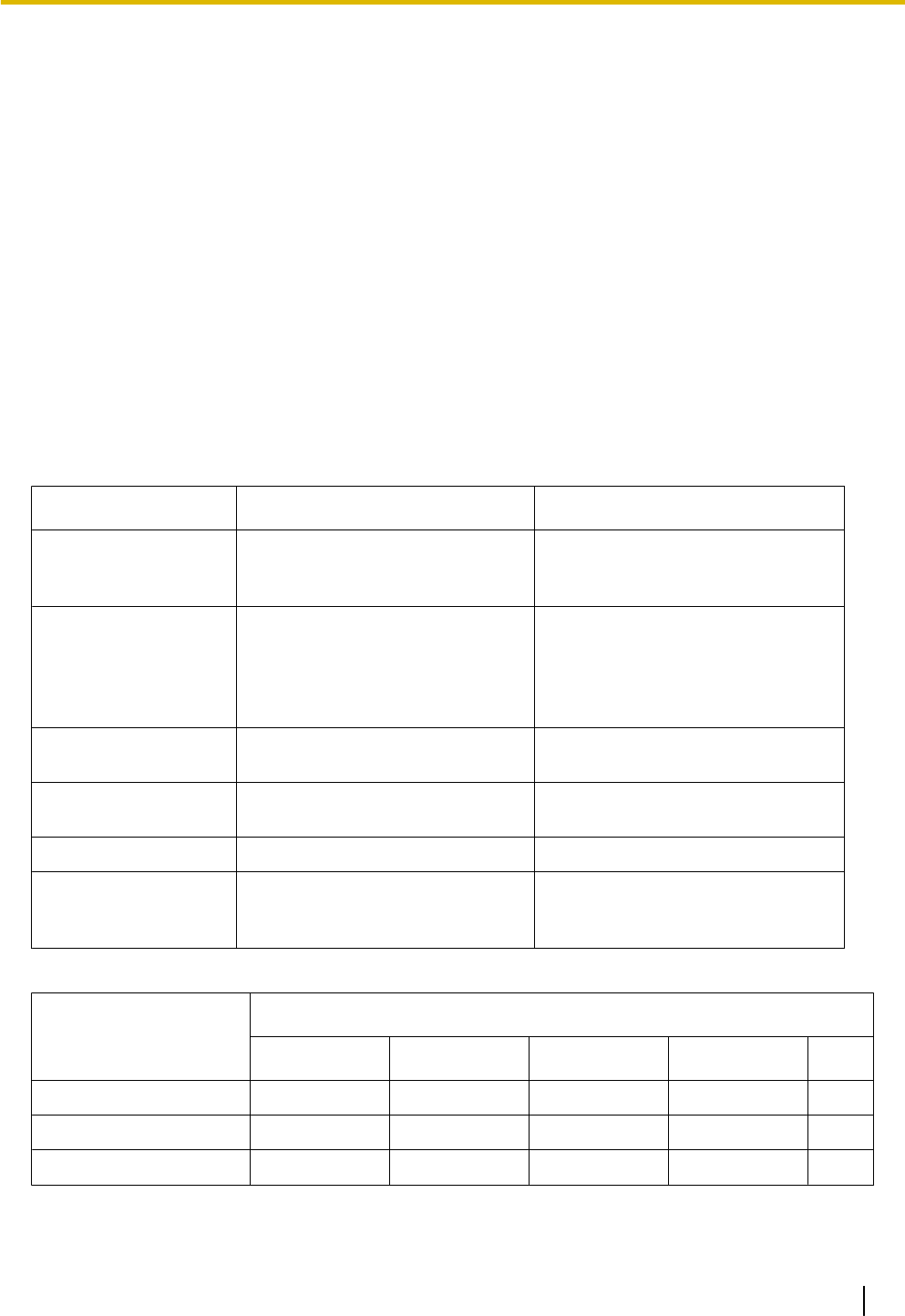
[632] Maximum Number of Agents
Feature Manual References
9.1.6 ICD Group Features—Queuing
9.1.6 ICD Group Features—Queuing
Description
When a preprogrammed number of extensions in an incoming call distribution group are busy, additional
incoming calls can wait in a queue. The number of calls which can wait in the queue is programmable.
While
calls are waiting in the queue, the calls are handled by the Queuing Time Table, which can be assigned
for each time mode (day/lunch/break/night) (® 17.1.5 Time Service). This PBX supports a specified number
of Queuing Time Tables which each have a specified number of sequences (specific commands which are
performed when a caller enters a queue). The following commands can be assigned to each sequence when
making a Queuing Time Table:
[Command Table]
Command Description Condition
OGM xx An outgoing message is sent to the
caller. "xx" applies to the OGM
number.
After the OGM, Music on Hold will be
sent and the next event in the
sequence will be activated.
Wait The caller waits for the specified
time while hearing a ringback tone
or Music on Hold.
If an OGM has not been sent to the
caller, the caller hears a ringback
tone.
If
an OGM has been sent to the caller,
the caller hears Music on Hold.
Sequence c Redirects to sequence c. "c" applies
to the sequence number.
None
Overflow Redirects to the overflow
destination.
None
Disconnect Disconnects the line. None
None
(No command)
Redirects to the next sequence. If assigned as sequence 01, the
Queuing Time Table will not be
activated.
[Programming Example of Queuing Time Table]
Queuing TimeTable No.
Sequence
*1
Sequence 01 Sequence 02 Sequence 03 Sequence 04 ...
01 OGM 01 Wait 30 s OGM 03 Overflow
02
*2
OGM 02 Wait 30 s OGM 04 None
03
Document Version 2008-11 Feature Manual 153
9.1.6 ICD Group Features—Queuing
